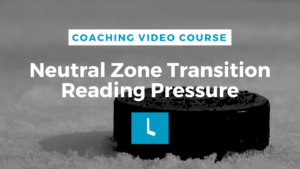We are thrilled to announce that Ryan Donald, Assistant Coach of Ivy League Yale University, NCAA Div I has accepted our invitation to join us as a Mentor and Senior Consultant. Ryan will serve as a mentor to our coaches on how to accurately and efficiently scout and recruit talent. He will be offering advice through columns on this site, to guide our readers and followers through the world of Junior, College, and Pro hockey. Ryan has broad expertise – one of his particular specialties is helping athletes at all levels to balance academic work with intense focus on the ice. His work at Yale gives him a unique perspective. Ryan will also be advising LG Sports on our programs in general.
Maintaining NCAA Eligibility:
Can I take Post-Secondary Courses While I Play Junior Hockey?
by Ryan Donald. Coach, Yale University NCAA Div I Varsity Team

Get started, just maintain part time status.
For those young adults preparing themselves for NCAA hockey, the topic of post-secondary education often comes up when players find themselves in Junior hockey. With the increasing use of leagues like the USHL/BCHL/NAHL for a year or two to ready players for the demands of NCAA Division I Hockey, we ought to take a closer look at what options are available for continued study.
As the age group for Junior hockey runs from 16-20 (21 for some depending on birthdate) it leaves many players playing while not having the responsibility of high school classes once they have graduated. It is in this window where players (and many parents…) wish to explore what is available to them while also remaining eligible for NCAA competition. The NCAA operates on a 4-in-5 basis, meaning that an athlete must use their 4 years of eligibility in a Division I sport within a 5 year window from the beginning of the first term of enrollment as a full-time student. The key to this rule is the term full-time student, which I will dive into a bit further. Take for instance a player who has graduated from high school and is headed to play their first year of Junior hockey as an 18 year old. They are now graduated from High School, are hoping to play NCAA Hockey, and want to take classes while they are playing. This situation is incredibly common, and the NCAA allows for this to occur. The biggest thing to ensure in this situation is that you only enrol PART-TIME. This is established by each individual institution – some consider part time to be 2 courses, some may be a bit more vague and say something like ‘anything less than full-time studies’. This is something to be on high alert for, because if you enrol FULL-TIME, whether intentional or not, your ‘Academic Clock” (5 year window) starts ticking.
Let’s continue with the storyline above, and consider a scenario where the player enrols in full-time studies for that year, but decides not to take any classes during their 19 year old season. This young man really turns a corner over the course of the season, generates some interest from a few NCAA programs, and is headed down the path towards college hockey. All looks good, until we check back with the old ‘Academic Clock” that has been ticking in the background. Ever since the school year began in the fall of his 18 year old season, this young man’s clock has been running, leaving him with just 3 years of eligibility left. If he were to enrol in college at the NCAA level for the start of his 20 year old season, he would only be able to suit up for three years, which doesn’t seem as appealing to those programs that were interested in him earlier.
This is why it is important to know and understand the regulations in place before getting ahead of yourself. One slip-up as simple as this can do irreparable damage to your eligibility, and taking you out of the running for NCAA hockey before you even know it! At this stage, if the player had enrolled as a part-time student, taking 1-2 classes to stay sharp, their clock would not have started until they set foot on a college campus for full-time studies for their 20-year old season. Part-Time vs Full-Time can make all the difference in the world, and is something to pay close attention to when making this decision.






